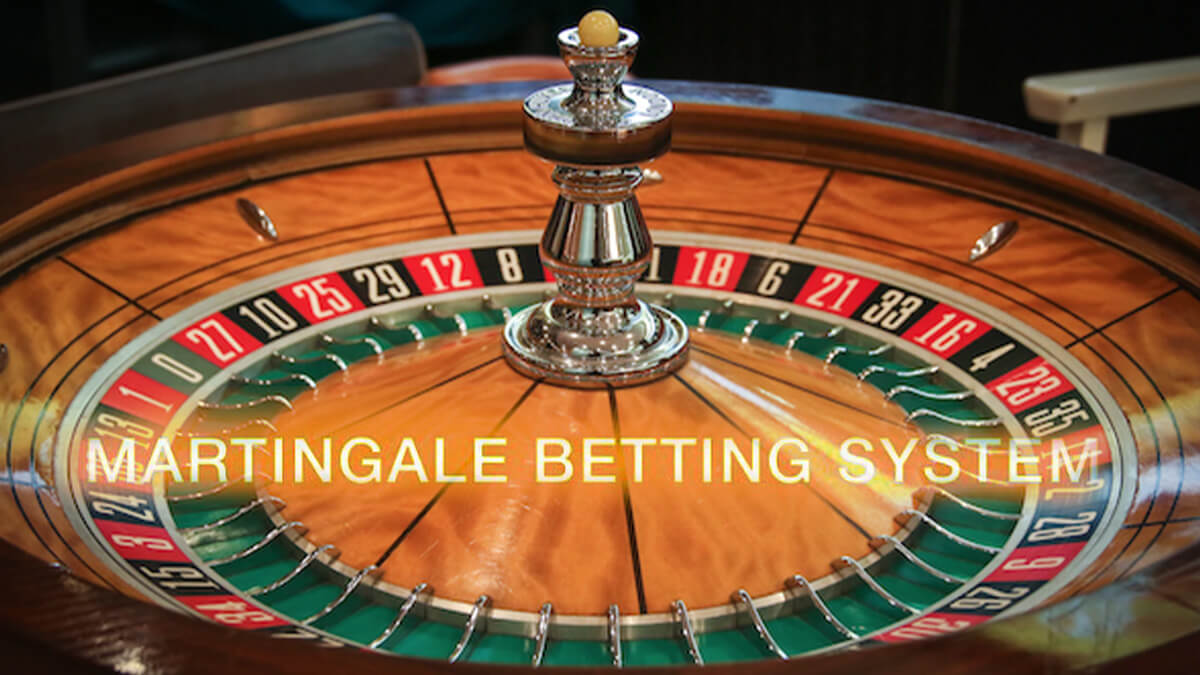Spend enough time sitting at roulette tables in Sin City, and you’re bound to spot players who size their bets according to a strict script. After starting with any particular amount, wagering on the even money “outside” bets, and watching the croupier sweep their chips away, these players simply double it up.
Their next wager is equal to exactly double the first, and should they lose on the second spin, a third bet is placed for double yet again. The players in question are following a progression betting system known as the “Martingale,” one which many roulette specialists swear by.
But as you’ll learn below, the Martingale is only effective in theory, as four real-world constraints ensure that the so-called strategy can never really work.
1 – The Martingale Requires an Infinite Bankroll to Survive Losses
Before diving into a critique of the Martingale, let’s run through a quick crash course on how this betting system purports to produce a profit.
The Martingale was originally developed way back in 1654, thanks to the French mathematician duo of Blaise Pascal and Pierre de Fermat. With roulette all the rage in France at the time, Pascal and Fermat hoped to apply their mathematical expertise to “crack” the game’s code.
What followed was the Martingale, a system based on progressively doubling your bet after every loss. By doing so, bettors are simply looking to end a losing streak – one of any length mind you – with a win which catapults them out of the red and into the black.
Here’s a Rundown of the Martingale Using Modern Roulette as the Basis:
You’re betting $10 chips on Black and start out with an immediate miss on Red. Down a ten spot to start, the Martingale approach requires you to double the stake on your next bet. You back black once more, this time for $20, and the bouncing ball finds its way to a Red space yet again.
With your deficit now standing at $30, your third bet doubles to $40 and wouldn’t you know it? Switching to Red didn’t help and the ball sits on a Black number. Finally, now at $70 in the hole, your fourth wager for $80 cashes in as a winner. You had to escalate your betting from $10 to $80 over four spins, but when your losing streak came to an end, you cleared a $10 profit ($80 payout – $70 in losses = $10 profit).
As you can see, the Martingale strategy is extremely appealing upon first appraisal. After all, by following the doubling rules to a tee, you will indeed wind up a winner – albeit a small one at just a single betting unit – in the end.
Appearances can be deceiving, however, and that maxim is apt when describing the Martingale system.
Following the example framework explained above, let’s take a look at how high the stakes can climb when betting by the Martingale book:
Martingale Bet Requirements in Roulette
| Spin(s) | Bet |
|---|---|
| 1 | $10 |
| 2 | $20 |
| 3 | $40 |
| 4 | $80 |
| 5 | $160 |
| 6 | $320 |
| 7 | $640 |
| 8 | $1,280 |
| 9 | $2,560 |
| 10 | $5,120 |
| 11 | $10,240 |
| 12 | $20,480 |
| 13 | $40,960 |
| 14 | $81,920 |
| 15 | $163,840 |
Expand | Shrink
Our example session saw the action climb from $10 to $80 in just four spins. Fortunately for us, a win ended the roller coaster ride fairly quickly, but let’s say we lost 10 spins in a row instead.
Losing 10 consecutive coin flips might seem like a lightning strike of a longshot, but the odds of that occurring are only 1 in 1,024. And remember, roulette’s even money bets are slightly worse than coin flips owing to the green “house” spaces 0 and 00. That means your odds of suffering a 10-spin losing streak are considerably higher when testing the wheel.
All told, you would need to have $10,240 on hand just to cover that pivotal 11th bet. And that’s not to mention the $10,230 you’ve already lost to that point.
And as the table makes startlingly clear, veering into a losing streak of 15 spins would require wagering the financial equivalent of a new home – all to win $10 in profit when it’s all said and done.
I don’t know about you, but betting five- and six-figure sums in order to secure a payout that won’t even get you a seat at the buffet doesn’t seem worth the trouble.
2 – Casinos Cap the Action w/Betting Limits Making Martingale Powerless
Speaking of trouble, that’s what the casino staff would be in if they allowed bettors to place massive bets in the sums shown above.
Every house has its own rules regarding betting limits, but most Las Vegas casinos use a 1,000x system by default. That is to say, while sitting at a $5 minimum table, the most you’d be permitted to wager on a single outside bet would be $5,000.
According to the latest Las Vegas roulette survey conducted by industry expert Michael Shackelford, the largest limit in town comes to $8,900 at the Harrah’s lone single-zero table.
Knowing this, it only takes a quick consultation with the table above to see that the Martingale has immediately hit a limit of its own. When a player winds up enduring that 10-spin losing streak, a betting cap of $8,900 means they aren’t allowed to wager the $10,240 called for by the Martingale on spin #11.
Thus, unless you’re willing to tempt fate on a rough run of spins that arises once in every 900 sessions or so, Las Vegas betting limits render the Martingale a moot point.
3 – The Odds Remain Unchanged Whether You Use the Martingale or Not
When using the American double-zero wheel, betting on any of the outside wagers – Red or Black, Odd or Even, and Low (1-18) or High (19-36) – offers win odds of 47.36 percent on any random spin.
Those win odds climb slightly to 48.64 percent on the European single-zero wheel, but in any event, you’ll always have a larger chance of losing than you do winning. This is how the house derives its precious edge, and no amount of strategizing will change that in a pure game of chance like roulette.
Once you accept this fundamental fact, the mirage of Martingale betting quickly fades away. By using the system, you aren’t altering your odds of winning in the slightest. All you’re really doing is increasing your liability on a negative expectation wager for no good reason.
In the end, a Martingale bettor boasts the exact same likelihood of winning on a single spin than everybody else at the table.
Furthermore, consider the matter of static bettors who stick with the same sizing during losing streaks. At $10 a pop, a five-spin losing streak puts them in the red for $50, so they’ll need to bet $60 over the next six spins – while winning all of them – to clear a $10 profit.
Martingale bettors will need $320 to cover their sixth bet in this scenario, or more than five times the liability incurred by static bettors.
And finally, because the odds of happening upon a six-spin winning streak largely mirror those of weathering a five-spin losing streak, static bettors have the same odds of reaching that $10 profit plateau as passionate Martingale devotees.
4 – The Martingale Is Just a Longer Road to the Same Destination
You can change the betting unit to any number under the sun, but the Martingale system’s end goal is to produce a profit of exactly one unit.
We’ve been using $10 as the base unit in our examples, so let’s stick with that standard to close things out. Over the course of five, 10, 15, or however many spins, the Martingale bettor aims to end losing streaks with $10 in profit to show for their time and energy.
But as we’ve already demonstrated in the previous passages, many attempts to run the Martingale gambit will end up with the player losing every dollar in their bankroll. All it takes is a long enough losing streak to run up against the casino’s table limit and the fun is over.
Overall, this dynamic equates to a gamble between winning $10 or losing hundreds or potentially even thousands of dollars – and all over the span of several spins to boot.
Meanwhile, a player who simply bets $10 at a time condenses this entire episode into the span of a single spin. They’ll either win their $10 prize or go $10 in the hole, but both their potential profit and potential liabilities are capped at one betting unit per play.
The Martingale “strategy” promises roulette players a shortcut to success, but all it really does is lead them into a winding maze of their own making.
Conclusion
From the gambling Frenchmen who pioneered the Martingale system, to the hopeful real money roulette enthusiasts who still use it four centuries later, every player wants to improve their odds. Unfortunately, that perfectly natural desire can soon transform into desperation, prompting gullible gamblers to put their faith in strategies which are quite literally too good to be true.
Martingale betting may technically be effective, but only from a theoretical standpoint involving infinite time, money, and limits. The real world doesn’t work like that though, which is why Martingale betting for real money at a real casino will always be a fool’s errand.
Michael Stevens
Michael Stevens has been researching and writing topics involving the gambling industry for well over a decade now and is considered an expert on all things casino and sports betting. Michael has been writing for GamblingSites.org since early 2016. …



